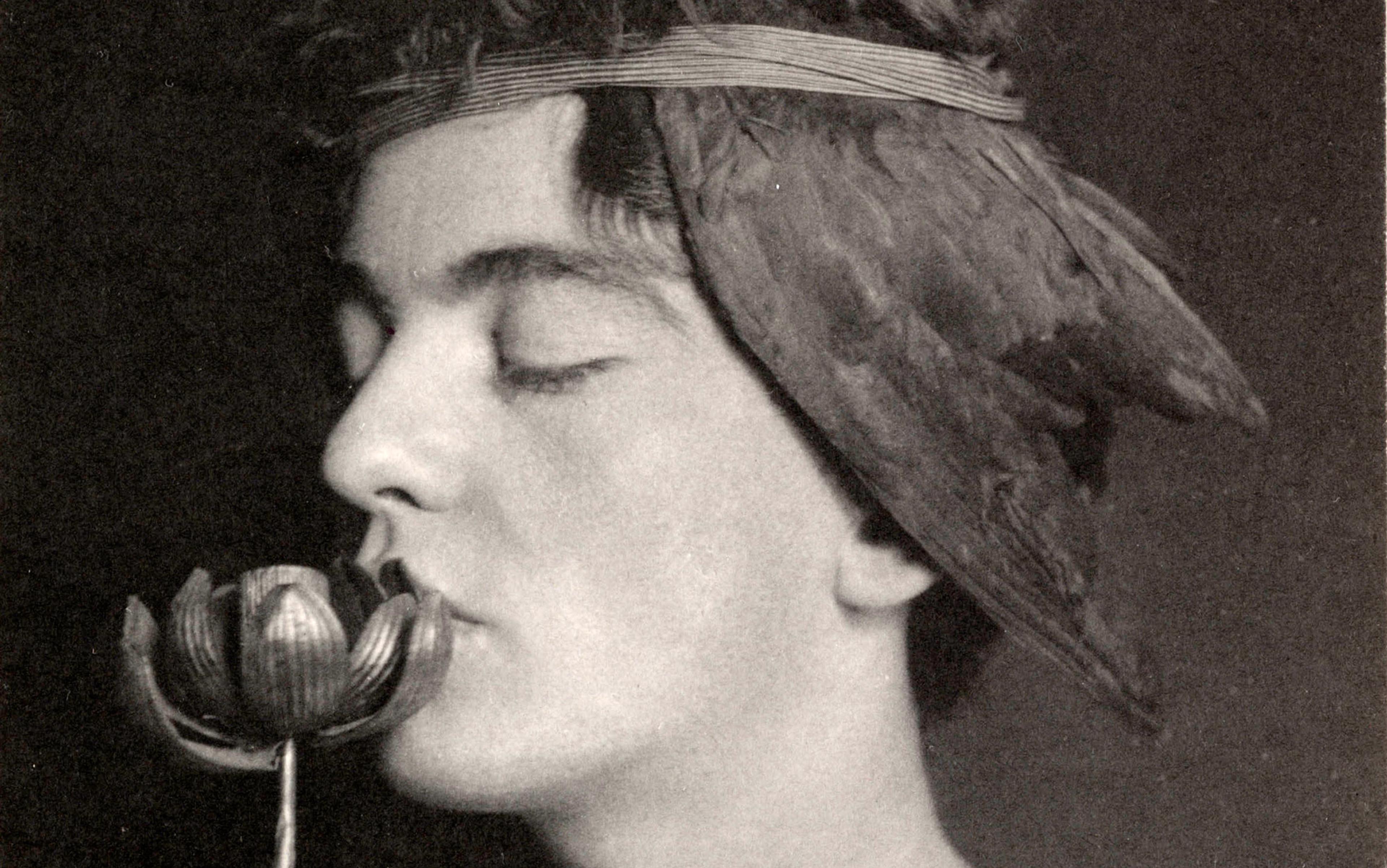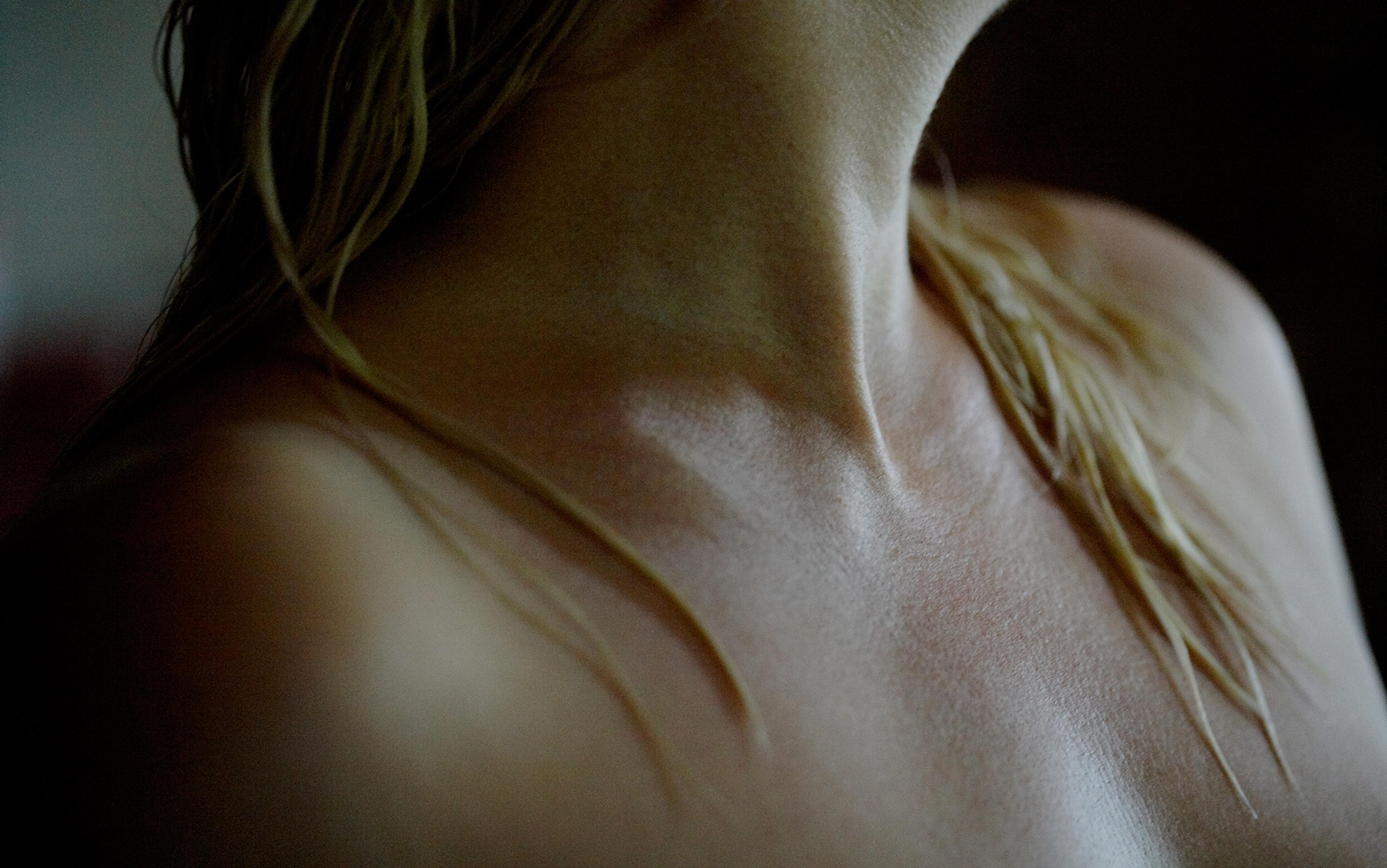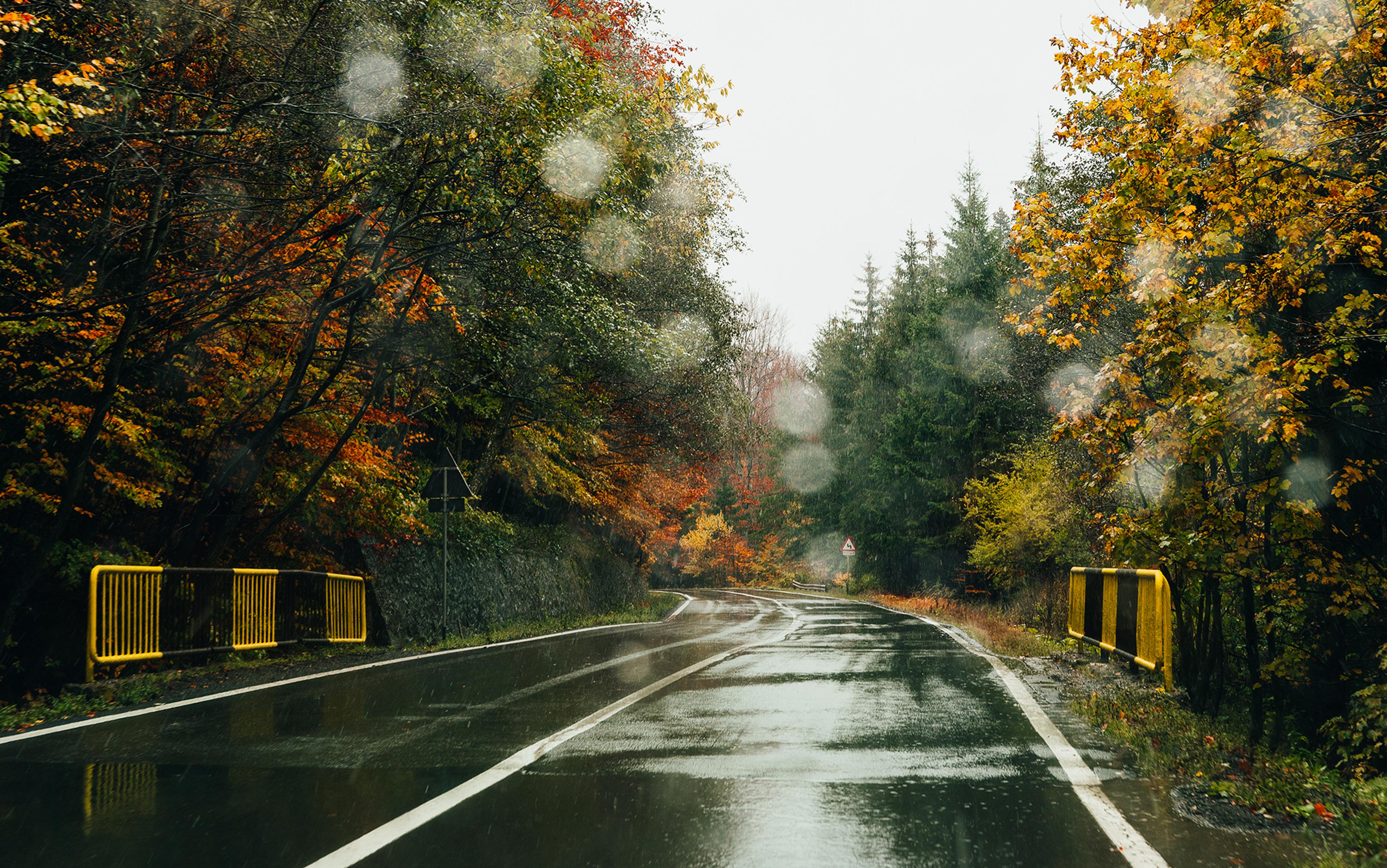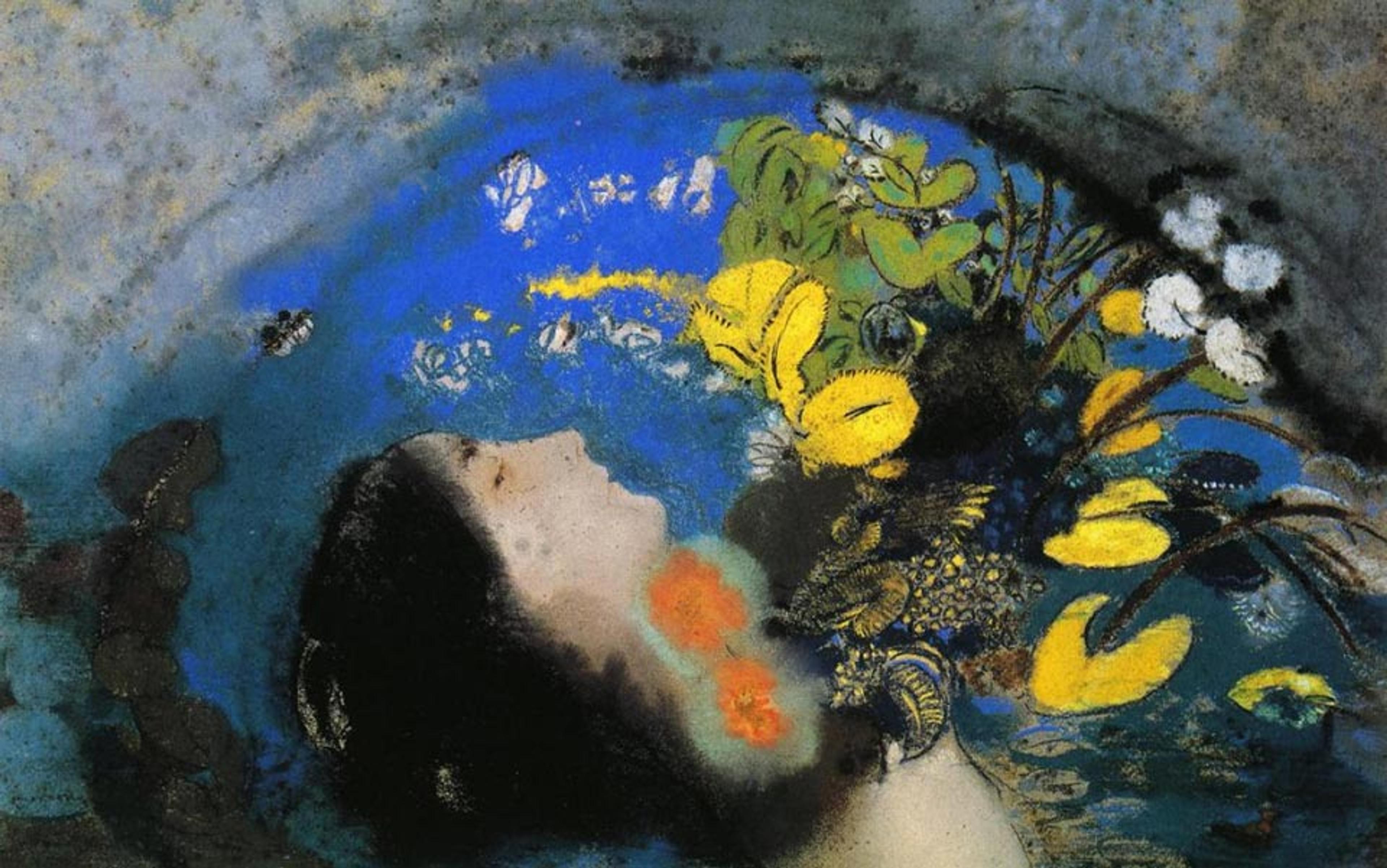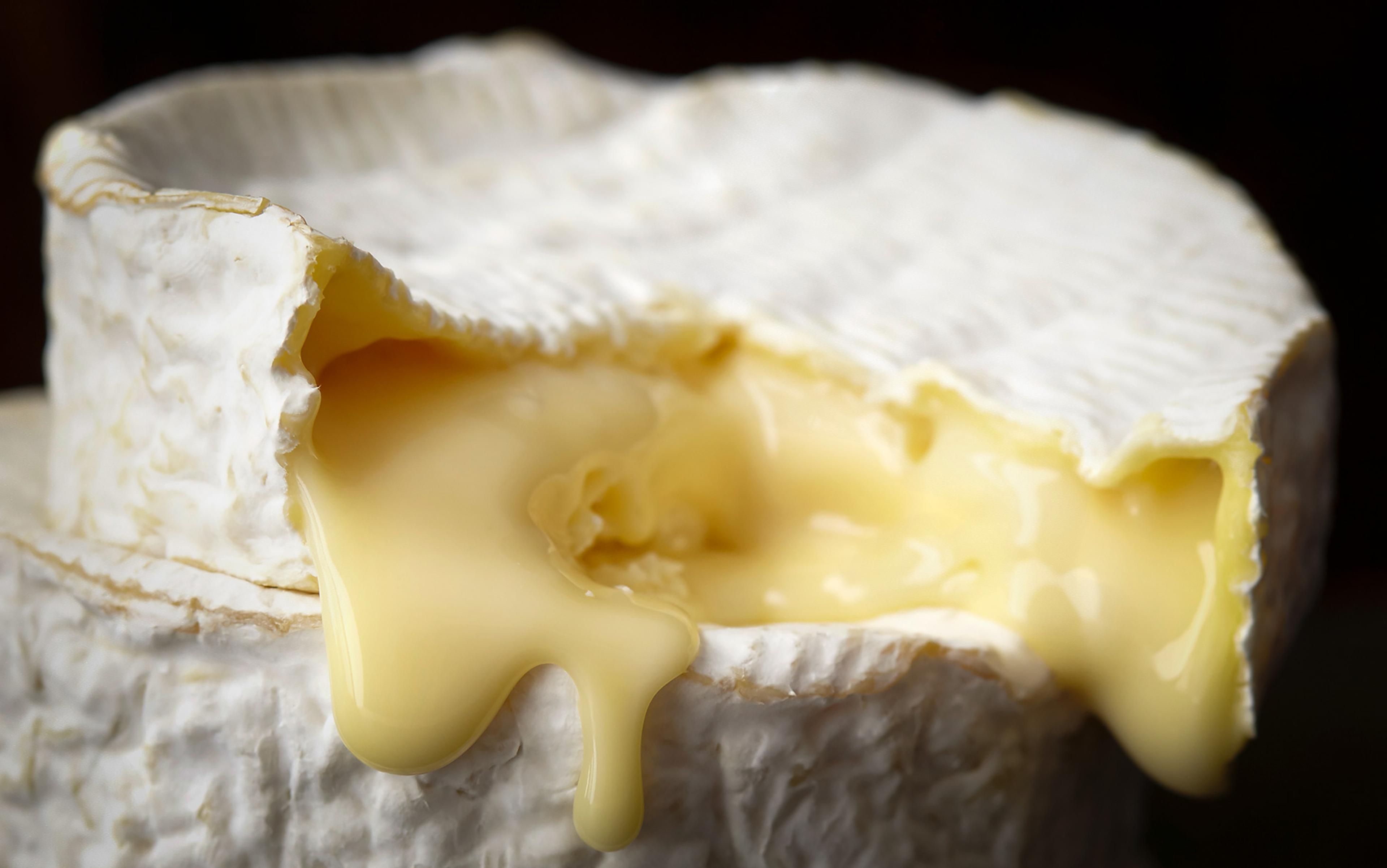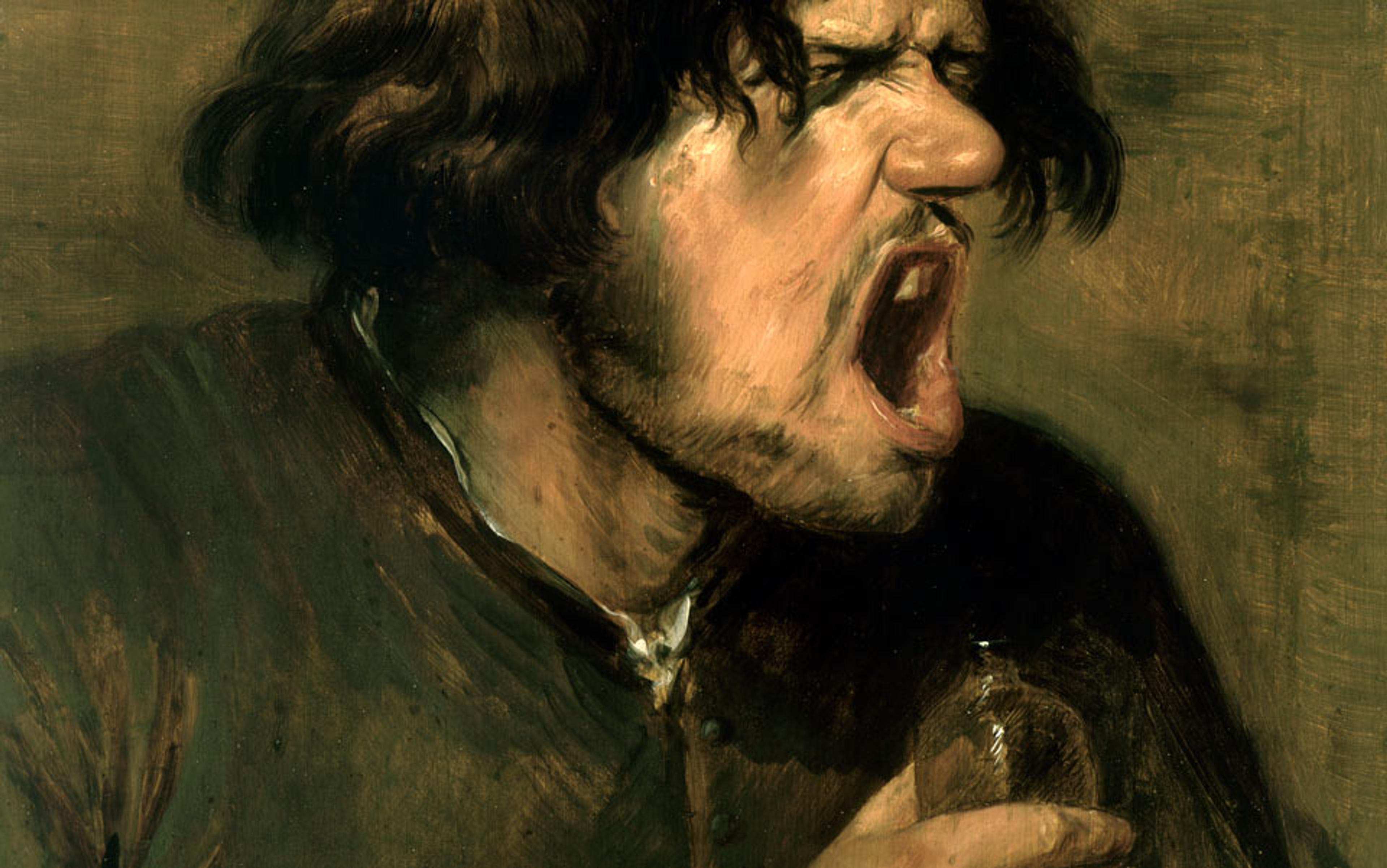‘Nature has good intentions … but … she cannot carry them out,’ proclaims Vivian, the spokesman in Oscar Wilde’s latterday Socratic dialogue ‘The Decay of Lying’ (1889). Vivian’s remark could serve as the perfect banner ad for the perfume industry of the time, when many of the key synthetic aroma chemicals that make up the bones of modern perfumery were discovered. For the skilled perfumer, an exact copy of a natural fragrance is neither desirable nor appealing: his art is to add complexity and interest in a refinement of nature. Perfume is the ideal accessory for Wilde and other decadent aesthetes who elevate art, imagination and culture over nature, and regard themselves as members of a higher order. The introduction of perfume synthetics accentuates what Max Beerbohm in 1894 called ‘a new epoch of artifice’.
Epitomising the epoch, the decadent dandy leads a life of leisured refinement, shuns utility, and is dedicated to perfecting himself and his immediate environment. Perfume is a manifestation of his aura of exclusivity, marking him off from the mass of common humanity. Influential representatives, real and fictional, begin with Jean Des Esseintes, the wealthy aesthete hero of J K Huysmans’s influential novel À rebours or Against Nature (1884), who turns his back on society to spend his time cloistered at home, collecting beautiful things and indulging his appetites. A connoisseur of perfume, he delights in experimentation, creating a scented ‘fabulous counterfeit of the countryside’ that he believes negates the necessity for travel.
Similarly, in Wilde’s The Picture of Dorian Gray (1891), Dorian emulates Des Esseintes in privileging art over nature. He collects precious artifacts and experiments with perfume, but also imitates the decadent dandyism of his mentor Lord Henry Wotton, an olfactory epicure who, like Wilde, affects scented buttonholes and handkerchiefs.
Aubrey Beardsley is another dandy and arbiter of artifice. Some of his elegantly sinuous, sinister black-and-white drawings, executed by candlelight, graced the covers of The Yellow Book, the leading decadent journal of the 1890s. Decadence, perfumery and their supremacy over nature come together in a story concerning Wilde’s friend Ada Leverson, whom Beardsley asked to come early for a party so that she could help him ‘scent the flowers’. When she arrived, she found him busily spraying the gardenia and tuberoses with opopanax, and he ‘handed her a spray of frangipane for the stephanotis’.
Synthetics are responsible for the creation of the more abstract, innovative perfumes of the 20th century, and in the 19th century they added notes such as vanilla, heliotrope, lilac and violet to a range of perfumes. From the 1890s and into the 20th century, synthetics also replaced traditional animalics such as musk, civet, castoreum and ambergris – secretions obtained respectively from the musk deer, civet cat, beaver and sperm whale – which had previously been used to add sensuality, depth and longevity to perfume. Musk, derived from the abdominal gland of the male musk deer, is difficult to obtain without harming or killing the animal, so has been little used since the musk deer became an endangered and protected species in 1979. Even before that, it was an expensive, hard-to-source ingredient until the first synthetic musk was discovered by Albert Baur in 1888 while he was working with explosives, whereupon it quickly became adopted by perfumers as it was relatively cheap to produce.
Baur made a fortune after patenting his ‘nitro-musk’ (a derivative of TNT), and subsequently developed other nitro-musks, including musk ketone, musk xylene and musk ambrette, which played a distinctive role in many well-known perfumes such as Chanel No 5 (1921). Nitro-musks disappeared from use after 1981 due to concerns about their toxicity, and because their photo-sensitivity caused them to decompose; they have since been replaced by new kinds of synthetic musks. The other animalics have also all been replaced by synthetics. Ambergris, a grey tarry intestinal secretion produced by the sperm whale, does not involve an intrusive or harmful harvest, as it is mainly collected from beaches. However, it is very rare and extremely expensive, so while it might be used in a few elite perfumes and by some independent artisan perfumers, a replacement synthetic such as ambroxan is usually employed instead.
Synthetics have been around for more than 150 years and are responsible for modern perfume as we know it, but the perfume industry tends to be tight-lipped about the matter. In our age of ‘green’ values, consumers, beguiled by advertising images of sunlit fields and flower-bedecked maidens, might think that their favourite perfume is ‘all-natural’ or at least composed from a high proportion of natural ingredients. Yet nearly all modern perfumes, even if they use some natural materials, contain a large proportion of synthetic ingredients, probably about 80 per cent in most instances. Most perfumers acknowledge that synthetics, far from being inferior to natural ingredients, enable them to achieve an olfactory complexity and staying power not possible with naturals alone. There are natural perfumers creating specialist niche products, but even they will sometimes use small amounts of synthetic materials to enhance their creations. ‘All-natural’ perfume tends to fade fast, and most perfume experts feel it can’t compete with the more aesthetically innovative or striking creations achievable with synthetics.
Nowadays, when anxieties about climate change and man-made pollutants have dethroned artifice in favour of nature, our knee-jerk prejudice assumes that ‘synthetic = cheap and nasty’. Yet low-quality naturals can smell bad, and it can be difficult to ensure the consistency of higher-grade ingredients. Some naturals such as jasmine, Bulgarian rose, tuberose and orris (iris) used in high-quality elite perfume are notoriously expensive because of their relative scarcity, and the intensive labour and other high production costs involved in their manufacture. They also smell different depending on their geographical source, meaning that demand can outstrip supply. Synthetics are much easier and cheaper to produce, although they can be rare and costly too, especially when new on the market. Often beautiful in themselves, they vastly increase the perfumer’s palette, adding light, shade and a range of impressionistic effects. Unlike naturals, which are composed of hundreds of molecules and can be affected by weather, soil quality and other variables, synthetics are simplified molecules that are much easier to control and they help to ensure a perfume’s consistent identity.
Both natural and synthetic materials can prove irritant, and their use in perfumes today is strictly monitored and regulated by the International Fragrance Association (IFRA), with potential offenders banned. However, in the ‘nice versus nasty’ health stakes, natural materials are more likely to be toxic or give you an allergic rash than synthetics, which being simpler in composition, can be modified so that problematic elements are removed.
Many in the perfume industry would also argue that synthetics, being less resource-intensive, are more ecologically friendly. Unlike flowers, they don’t require acres of productive land, labour and lengthy processing. The sourcing of rarer naturals such as sandalwood has been responsible for deforestation and ecological damage, with the result that many perfumers now avoid them and use synthetics instead. Replacing rarer botanical naturals with synthetics for environmental reasons follows the now established practice in Western perfumery of substituting synthetics for animal-derived ingredients.
‘When the odour of lilas blanc passes suddenly across me … I have to live the strangest month of my life over again’
Synthetics are made in a lab and take three forms. Synthetic coumarin, for example, is nature-identical; it replicates a scent molecule found in tonka beans (coumarou in French) and in specific grasses and plants such as sweet woodruff, clover and meadowsweet. It has the sweet, vanillic aroma of new-mown hay. Coumarin can be derived from tonka beans but it is a lot quicker and cheaper to synthesise it in the lab, and nature-identical synthetics have the advantage over naturally derived molecules of being purer. Some synthetics are derived from modifying natural raw materials such as essential oils, while others, such as Calone, created in 1951, are entirely man-made. Calone has a watermelon-aquatic scent, and was used extensively in perfumes in the 1990s for its fresh, marine nuances. Such new molecules, if they create qualitatively new and desirable effects, are of great commercial value. Fragrance companies might develop three or four of these a year, and they are exclusive to that company until the patent expires.
Even at the most basic level, the earliest synthetics fulfilled Wilde’s decadent aim of improving on nature in that they helped to create the illusion of particular floral scents where a natural essence was unobtainable or too laborious or costly to manufacture. Scents that fall into this category include Victorian favourites such as lily-of-the-valley, lilac, heliotrope and violets. Wilde favoured a number of perfumes that almost certainly included synthetics. When the young poet Theodore Wratislaw visited him at Goring-on-Thames in August 1893, he observed that:
Oscar … joined me, clearly spraying himself with a scent which filled the room. I inquired its name. ‘It is white lilac,’ he said. ‘A most insidious and delightful perfume.’
Wilde’s Lord Henry, waxing lyrical about the mnemonic power of perfume, tells Dorian: ‘There are moments when the odour of lilas blanc passes suddenly across me, and I have to live the strangest month of my life over again.’
Before the advent of synthetics, perfumers would blend other naturals to reproduce these otherwise unobtainable floral scents. One of the leading British guides, G W Septimus Piesse’s Art of Perfumery (1855), gives a recipe for an imitation essence of white lilac, its principal ingredient being ‘spirituous extract from tuberose pomade’. A much cheaper alternative after 1885 was the use of the synthetic terpineol, which had a recognisable lilac odour, and could be combined with natural ingredients to make a convincing scent. While all perfume is a matter of artifice, Wilde’s ‘white lilac’ accentuates its decadent artificiality by incorporating this new synthetic ingredient.
Terpineol is also likely to be the chief ingredient in lily-of-the-valley, another immensely popular late-19th- and early 20th-century floral fragrance, and a favourite scent of the decadent poet Arthur Symons. In 1891, the fifth edition of Piesse’s guide adds that: ‘An artificial otto of Lily of the Valley is now in the market. Its odour closely resembles that of the flower.’ An ‘otto’ (or ‘attar’) is a fragrant essential oil, but by ‘artificial otto’ Piesse means a synthetic. Terpineol would boost the production of both lilac and lily-of-the-valley scents. After 1905, perfumers would use a new synthetic for lily-of-the-valley called hydroxycitronellal, now accepted as producing the most authentic odour of lily-of-the-valley, and a key element in Edmond Roudnitska’s Diorissimo (1956), probably the most celebrated 20th-century lily-of-the-valley fragrance.
Perfume in the Victorian period was more unisex than now, and although most men might have limited their use to eau de cologne, those who saw themselves as urbane or bohemian or dandies certainly wore more, including florals. While conservatives would have regarded a man wearing perfume as ‘unmanly’ or ‘effeminate’, such labels did not, as they might now, imply homosexuality. In a ‘confession album’ entry of 1877, Wilde specified his favourite perfume as ‘almond blossom’, incidentally one of the heavy scents, along with musk and rose saffron, that the American beauty adviser Harriet Hubbard Ayer would list in 1899 as ‘dangerous’, being ‘almost hypnotic to some sensitive organisations’. Almond blossom is a sweet floral scent with a touch of almond in it, a note that in the 19th century might be recreated using small quantities of either essential oil of bitter almonds or one of the very earliest synthetics. One contender is benzaldehyde, first synthesised in 1836, although perfumers often used a cheaper, though very toxic synthetic ‘otto of almonds’ called ‘Oil of Mirbane’ (nitrobenzol, aka nitrobenzene), created in 1834.
Wilde evidently liked that almond note in perfume as there is also an almond nuance in heliotrope scent. Heliotrope, a much-loved white or purple garden flower in the 19th century, was a popular Victorian fragrance – a vanilla-sweet, almond-smelling, powdery floral. Lord Henry’s remark about the mnemonic power of ‘lilas blanc’ is originally made about heliotrope in the earlier, shorter version of Dorian Gray published in the American Lippincott’s Monthly Magazine (1890). Heliotrope also features heavily in Teleny (1893), an anonymous homoerotic novel written by several authors of whom Wilde is thought to be one. Heliotrope blanc is the favourite scent of the narrator Camille Des Grieux and the man he falls for, René Teleny, a handsome and talented young pianist. When the pair make love, it is in Teleny’s apartment in a white chamber specially designed by him and perfumed with White Heliotrope, and afterwards the lovers bathe together in ‘warm water, scented with essence of heliotrope’.
Heliotropin is no longer available for sale in its pure state because of its use in making ecstasy and MDA
‘White Heliotrope’ is also the name of a short lyric by Symons, composed in 1893 and published in his collection London Nights (1895). The male speaker of this lyric, having experienced a one-night stand, wonders if at some point in the future the scent of White Heliotrope will act as a trigger, reviving memory of this liaison:
This (need one dread? nay, dare one hope?)
Will rise, a ghost of memory, if
Ever again my handkerchief
Is scented with White Heliotrope.
The perfume could be the man’s own, worn for an evening out but, as it is associated with this particular encounter, it is probable that he has casually helped himself to his lover’s scent from the dressing table where ‘hat, hair-pins, puffs, and paints are spread’. If in Teleny, White Heliotrope represented magnetic affinity, a sign of the aesthetic and sexual tastes shared by the two young men, in Symons’s self-consciously modern poem, it becomes an olfactory mnemonic for a casual encounter. In its up-to-the-minute snap-shot of contemporary sexual manners, the poem shows us the bohemian man-about-town perhaps trying rather too hard to affect a cool nonchalance about his bachelor lifestyle.
Heliotrope flowers were rarely used in perfumery so, as Piesse explains, the perfume was originally made using vanilla extract, almond oil, and rose and orange-flower pomatums. Synthetic heliotropin (aka piperonal), which has the vanillic cherry-almond smell of heliotrope flowers, was discovered by Rudolph Fittig and W H Mielk in 1869, and first listed in perfumers’ catalogues in the 1880s. Greater availability of the synthetic and a dramatic decrease in its cost caused a proliferation of heliotrope perfumes. Originally an expensive elite product, by 1893, when Symons wrote his poem, the fragrance had reached a popular high and was beginning to lose its cachet. Heliotrope is a less familiar note today, and while some of the classic early 20th-century perfumes that featured it – such as Guerlain’s exquisite Après l’Ondée (1906) – are still with us, the note is less evident. Like a number of other early synthetics, heliotropin is now restricted by IFRA, and is not available for sale in its pure state because of its use in making designer drugs such as ecstasy and MDA.
Wilde was fond of wearing parma violets as a buttonhole, and he had a partiality for a scent called Canterbury Wood Violet, likely to have included the synthetics known as ionones, discovered by Ferdinand Tiemann and Paul Kruger in 1893. The word ionone derives from ion, the ancient Greek word for violet, and alpha-ionone suggests violet’s floral aspect, while beta-ionone its woody aspect. While it was possible to obtain a natural violet extract, this was an expensive and laborious process so, before the availability of the synthetic, most violet perfume was made using a tincture of orris-root which has a violet aroma. Synthetic ionones were responsible for a big upsurge in the production of violet perfume, helping to make it one of the most popular late Victorian and early Edwardian scents.
Wilde might have preferred single-note floral perfumes, but the 1880s and ’90s also saw the beginnings of more inventive, impressionistic, abstract compositions. Ernest Beaux, creator of Chanel No 5, later commented on the sophistication of these new perfumes, noting that: ‘Up to the industrial realisation of vanillin, heliotropin, coumarin and Musk Baur, the formulae were very simple and to a perfumer nowadays would seem naïve and humdrum.’
Coumarin, with its sweet vanilla hay-like smell, synthesised by William Perkin in 1868, was one of the earliest important aroma-chemical discoveries but also the first synthetic odorant to star in a major modern perfume – Fougère Royale, launched by the French perfume house Houbigant in 1882, and still extant in a re-issued version of 2010. Its refreshing ‘accord’ (or classic harmonious combination) of base notes of coumarin and oakmoss with a top note of lavender would become standard in so-called fougère (fern) fragrances, aimed principally at men. (The name fougère is poetic licence as such fragrances do not imitate the smell of fern.)
The young hero carefully preserves some soap scented with Le Trèfle Incarnat as a memento of his first crush
Guerlain’s Jicky (1889), another early groundbreaking perfume, has a fougère accord, but includes an additional synthetic, namely vanillin, synthesised from conifer sap by Ferdinand Tiemann and Wilhelm Haarmann in 1874, and from guaiacol (distilled guaiac resin) by Karl Reimer in 1876. Replacing expensive natural vanilla, vanillin was of huge advantage to perfumers. Jicky’s hefty dose of animalic civet made it a provocative, edgy, avant-garde fragrance, and although originally aimed at women, it was worn mainly by men until around 1912.
Jicky is mentioned in Compton Mackenzie’s novel Sinister Street (1913-14). In a scene set around 1898, Wilmot, a Wildean decadent dandy, refers to smoking ‘my Jicky-scented hookah’, presumably having added the perfume to the tobacco in his waterpipe. Smoking Jicky is not as strange as it sounds, as coumarin, present in Jicky, has a tobacco facet, and has often been added as a flavouring to tobacco.
Sinister Street also makes reference to another classic though now sadly discontinued fougère fragrance, Le Trèfle Incarnat (Crimson Clover), launched by L T Piver in 1897 or 1898, and popularised by the Paris International Exhibition of 1900. It contains amyl salicylate, synthesised by Auguste George Darzens in 1896, and reminiscent of the smell of red clover. Rather like coumarin, amyl salicylate has a sweet, clean, green, cut-grass aroma, and is today used in many shampoos and bath products as well as in fougère fragrances. In a scene set in 1900, Michael Fane, the young hero of Sinister Street, carefully preserves some soap scented with Le Trèfle Incarnat as a memento of his first crush, later ‘callously’ using it and enjoying its fragrance as his infatuation fades. Like White Heliotrope, Le Trèfle Incarnat would become a victim of its own success. Its novel, vibrant smell and affordability meant that it was adopted by less-than-respectable types, leading to its rejection by polite society and its eventual disappearance in the 1920s.
In the late 1890s, the leading British perfume house Piesse and Lubin boldly advertised its wide range of ‘Synthetic Scents’, which included Wallflower, Rose, Violet, Lily of Valley, Heliotrope, Musk, ‘and many others’. In startling contrast to the perfume industry’s silence about synthetics, and echoing the boasts of decadent artists to improve on nature, Piesse and Lubin testified to the perfumes’ ‘non-evanescence’, promoting them as ‘a triumph of the science of the Parfumeur-Chimiste over Nature’ and ‘the most Refined scents ever placed before the Public’. The house’s assertion would have delighted Wilde, who had declared that: ‘The first duty in life is to be as artificial as possible.’
